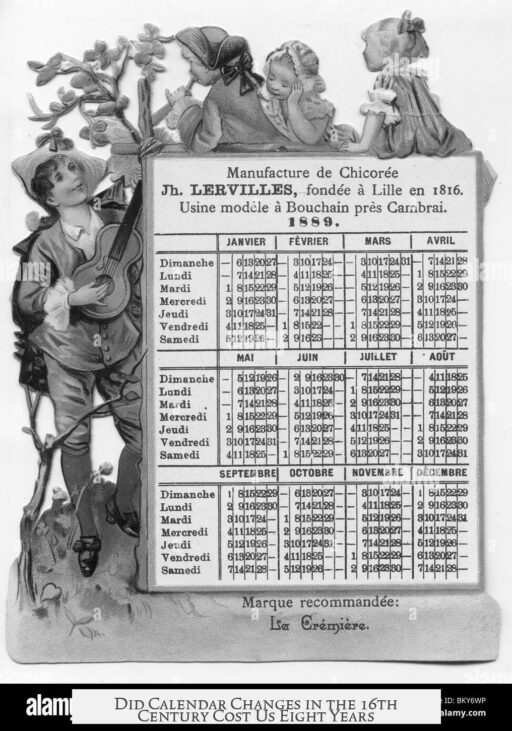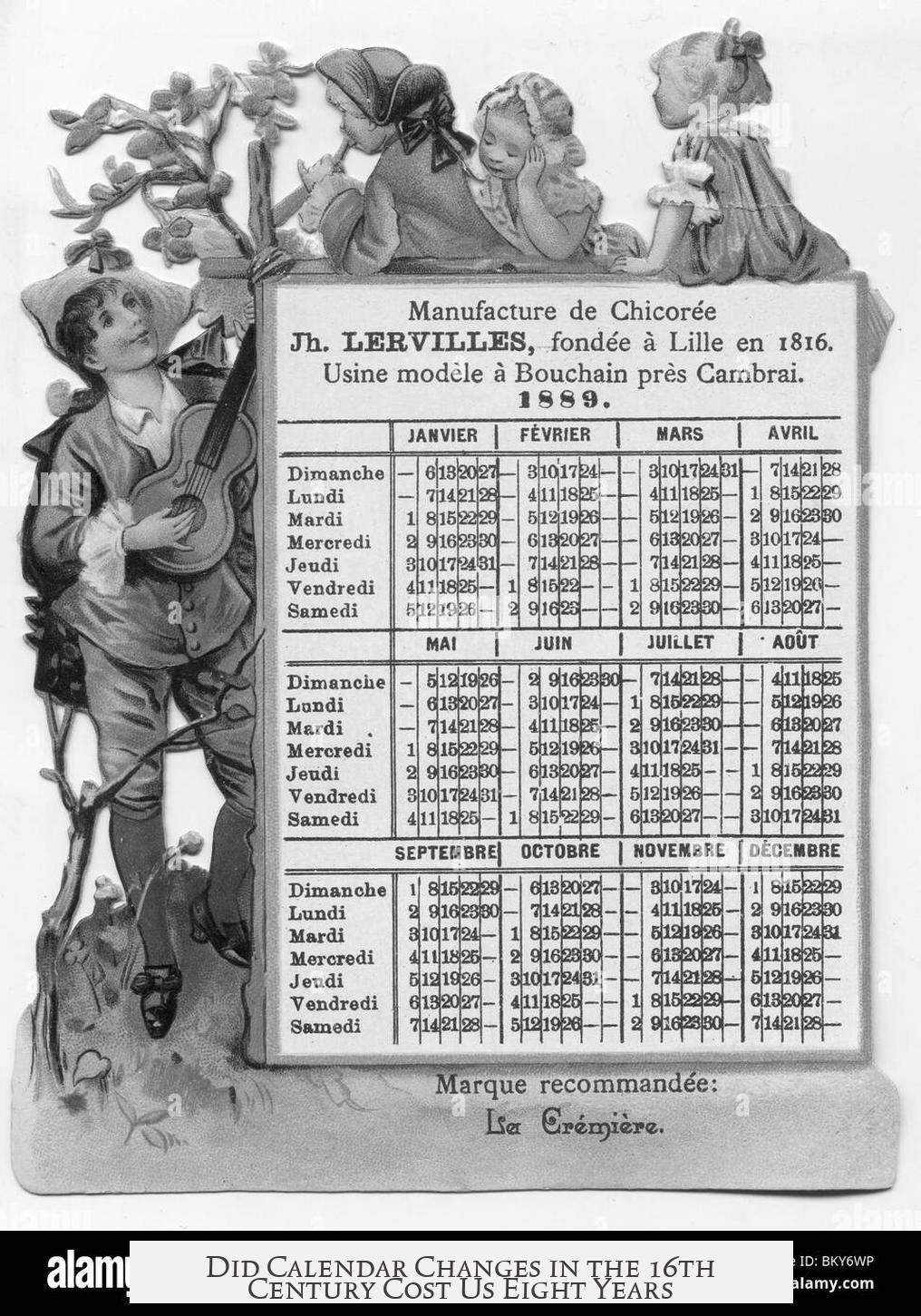No, we did not lose 8 years due to calendar switches in the 16th century; the adjustment involved skipping only about 10 days to correct calendar drift. The change was a response to inaccuracies in the Julian calendar, which caused the calendar dates to slowly shift relative to the solar year. Only days were omitted during the transition, not entire years.
The Julian calendar, introduced by Julius Caesar in 46 BCE, assumed a year length of 365.25 days by adding a leap day every four years. However, this estimate was slightly too long. The actual solar year is roughly 365.2422 days. This small difference caused dates related to the seasons, such as the vernal equinox, to move by about one day every 128 years.
By the 16th century, this drift had accumulated to around 10 days, which disrupted important religious observances like Easter. The Council of Nicaea in 325 CE had set Easter to fall on the first Sunday after the first full moon following the vernal equinox, around March 21. The Julian calendar’s inaccuracy led to Easter being celebrated earlier than intended.
The Gregorian calendar reform was enacted by Pope Gregory XIII in 1582 through the papal bull Inter gravissimas. The reform removed 10 calendar days to realign the calendar with the solar year and seasons. In practice, the day after October 4, 1582, became October 15, 1582, restoring the vernal equinox to March 21.
Alongside the date skip, the Gregorian calendar introduced refined rules for leap years:
- Years divisible by 4 remain leap years.
- Years divisible by 100 are not leap years, unless divisible by 400.
- For example, 1700, 1800, 1900 were not leap years, but 1600 and 2000 were.
This adjustment gave an average year length of 365.2425 days, nearly matching the solar year and reducing drift to about one day every 3,000 years.
The perception that 8 years were lost likely stems from misunderstandings of the skipped days or the complex calendar transitions. Some countries adopted the Gregorian calendar much later, requiring skipping 11 days, as Great Britain did in 1752 by shifting from September 2 directly to September 14. However, nowhere in the historical record was a span of multiple years removed.
Examples clarify the scale of the adjustment:
- George Washington’s birthday was recorded as February 11, 1731 (Julian) but observed as February 22, 1732 (Gregorian) after Britain’s adoption.
- St. Teresa of Ávila died on October 4, 1582, which was followed by October 15 in Gregorian countries.
These date changes reflect skipped days, not missing years. The calendar switch corrected accumulated inaccuracies to restore seasonal alignment.
The staggered adoption across countries complicated historical dating, causing some confusion but not loss of years. Protestant and Orthodox countries transitioned gradually over centuries:
| Country/Region | Adoption Year | Days Skipped |
|---|---|---|
| Italy, Spain, Portugal, France, Poland | 1582 | 10 days |
| Great Britain and Colonies | 1752 | 11 days |
| Russia | 1918 | 13 days |
| Greece | 1923 | 13 days |
This demonstrates the calendar reform’s universal goal: aligning civil timekeeping with the natural solar year. The skipped days were a practical measure to fix historical drift accumulated over centuries.
“The days weren’t lost or anything; it’s simply a matter of switching how they are designated.” — Summary from calendar reform experts
Retroactively re-labeling old Julian calendar dates with their Gregorian equivalents removes any abrupt jumps in dates, confirming that no years vanish—only calendar days were realigned.
- The Julian calendar’s 365.25 days per year overestimates the solar year length.
- The Gregorian reform skipped 10 days in 1582 to correct the drift.
- Leap year rules changed to further improve accuracy.
- No evidence supports losing 8 years during calendar reform.
- Countries adopted the Gregorian calendar over centuries, skipping days, never years.
These changes fixed the alignment of calendar dates to astronomical events without removing full years from the historical record.
Did the 16th century calendar switch cause a loss of 8 years?
No, the switch only skipped about 10 days, not years. The calendar reform corrected the drift caused by the Julian calendar but did not remove full years.
Why were 10 days skipped during the calendar reform?
The Julian calendar year was slightly too long. Over centuries, this caused the calendar dates to drift from the seasons. Skipping 10 days realigned the calendar with the vernal equinox.
How did the Gregorian calendar improve accuracy over the Julian calendar?
The Gregorian calendar refined leap year rules. It skipped leap years on years divisible by 100 unless divisible by 400. This adjustment better matched the actual solar year length.
Was the calendar change uniform across all countries at once?
No, different countries adopted the Gregorian calendar at different times. This caused temporary variations in dates but did not affect the total number of years.
Could we relabel old dates without losing time?
Yes, by retroactively converting Julian dates to Gregorian equivalents, there would be no sudden jumps or loss of years—just a shift in how dates are counted.




